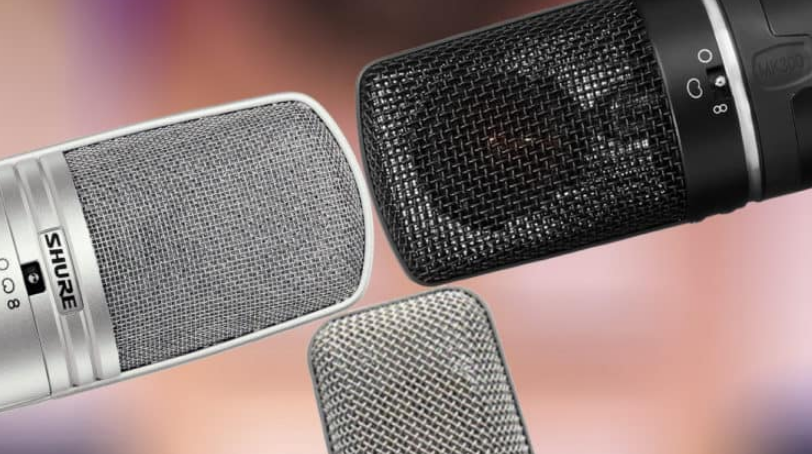To obtain reliable information about the sound differences between two microphones, the test setup for both models must be as identical as possible - in the best case, identical. Same room, same place, identical performance or sound source, etc.
In reality, this is very difficult and very difficult to implement. In a home studio, this is almost impossible. So that we don't end up comparing apples with oranges, the test setup should be as identical as possible. And that is why we are now going into a few points that you can influence and implement to get reliable results when comparing microphones.
Performance and sound source
The most important factor here is the consistent performance: Both models for the microphone comparison must be discussed (or recorded) at the same time. Professional singers or instrumentalists can reproduce a performance very similarly from time to time. But even then there are differences between each take. Especially with less experienced musicians, these are too big to be able to recognize sound differences.
In addition, the best budget vocal microphones should be at the same angle and distance from the singer/speaker or instrument. The intended addressing devices for both microphones must be adhered to, so the capsule must be precisely aligned with the sound source. To be able to set up each microphone correctly, you also need to know whether their capsules are often located differently behind the microphone head. Just a few centimeters can make a big difference here.
It is best to place both microphones as close together as possible, a sufficiently large pop screen is sufficient for both. Then you sing into both of them at the same time and record that.
Equipment
To be able to make a reliable comparison, all other factors should also remain the same as possible. Two identical microphone cables with the same length and identical preamplifiers or inputs on the audio interface are perfect. For example, if you use a microphone preamplifier for microphone A and the audio interface for microphone B, you will get different sound colors that do not come from the microphone itself.
Record in your studio
A microphone comparison in the shop of your choice will only give you half the information you need. Because the sound of your room in combination with a certain model can be a no-go. You can only make a final statement about the sound in your recording room.
Positioning in space
For the microphone comparison, not only your studio or recording setup but also the positioning in the room is important. If you place a model too close to a wall, the early reflections of the room can enormously distort the sound comparison.
1. Find comparison models
There is this saying about comparing apples and pears, which also comes into play when comparing microphones. If you are looking for a model to record your voice, you should focus on the appropriate microphones and not include instrument microphones that are not yet designated.
2. Test setup
Both microphones are best aligned horizontally, the capsules as close to each other as the housing allows. If one case turns out to be significantly larger than the other, you have to make sure that the capsules are equidistant from the singer or speaker. When setting up, you also make sure that they are equidistant from walls, ceiling, and floor. The two models can share a pop screen - this should be the same distance from both capsules.
3. Connection
Both devices are connected to the same preamp or audio interface with the same type of microphone cable. A high-quality device offers you the best conditions to be able to take meaningful pictures. With very cheap models, the two channels used can sound different on their own.
4. Leveling
For a scientific comparison, the pre-amplification ("Gain") of both microphones would have to be set to the same value. This ensures that the subtle background noise of both preamps is on the same level. The level of the recordings would only have to be adjusted for a listening comparison when listening.
5. Take test shots
Both microphones are discussed, sung about, or recorded at the same time. Make sure that you always maintain a position that is the same distance from both microphones. Your mouth or the instrument should point in the middle between the two microphone capsules.
6. Admission to the DAW
In your music program, there should be a separate track for each microphone and be given the correct name. When all recordings have been made, you can normalize them and then compare and analyze them at your leisure.
Conclusion microphone comparison
There is only one criterion that counts in the end with microphones: Does it sound good on the recorded voice or the instrument? The design, directional characteristics, price, and reputation of the manufacturer should have little or no weight here. In addition, there are of course always standard and typical go-to microphones that always work. Sometimes more sometimes less.
Also read about:
Beginners Guide To Snapchat Screen Recording For Monitoring Employees Social Media Activities
Problems Financial Reporting Automation Solves for Corporate Finance Teams
10 Tactics For A Successful Accident At Work Claim







